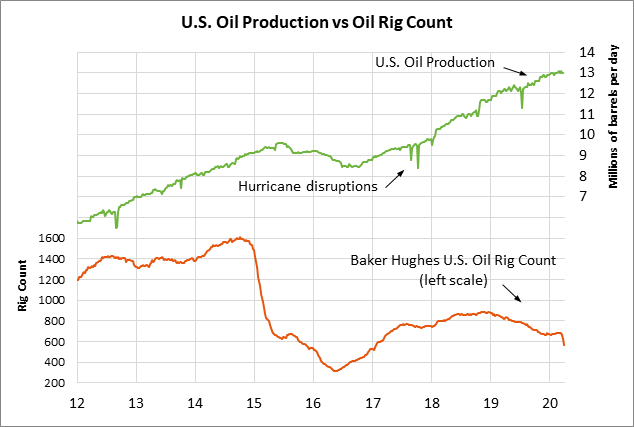- Stocks rally sharply on news that some pandemic hotspots may be peaking
- Fed announces more stimulus measures
- Germany refuses to issue joint debt but ECB keeps Italy bond yields down
- Oil prices fall as OPEC+ meeting is delayed and as U.S. cooperation is sought
Stocks rally sharply on news that some pandemic hotspots may be peaking — The S&P 500 index on Monday gapped higher to a 3-1/2 week high and closed the day up +7.03%. The 10-year T-note yield on Monday moved sharply higher by +8 bp to 0.67%.
Stocks on Monday rallied on the Fed’s stimulus announcements and on indications that Washington is moving closer to a fourth stimulus bill. House Speaker Pelosi told Democrats on a conference call that she is moving towards a bill of at least $1 trillion that is focused on replenishing the programs in the last bill, such as sending money directly to Americans and providing loans to small businesses. She said more help is also needed for state and local governments. She said the aim is to pass the bill later this month.
Stocks on Monday also rallied on hopes that the pandemic may be easing in certain hotspots. Italy and Spain, for example, reported the fewest deaths in more than two weeks on Sunday. Also, the number of deaths in New York plateaued over the weekend. However, it is far too early to anticipate victory since there will be many more hotspots to come, as well as potential flare-ups in previous hotspots once lockdowns are eased.
Meanwhile, China, which is in its fifth month of its pandemic, has been able to dramatically dampen the outbreak, though with much more aggressive methods than have been used in Europe or the United States. China’s economy is currently running at about 90-95% of capacity, according to estimates by Bloomberg Economics, which is much better than levels near 50% in Jan-Feb. However, that implies that China’s GDP is still down by at least 5% from its peak, which is a severe recession by any measure.
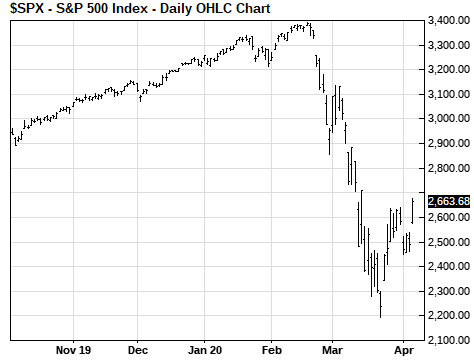
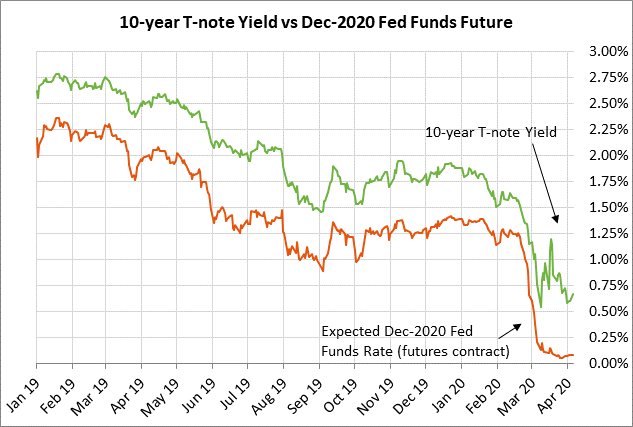
Fed announces more stimulus measures — The Fed on Monday made two announcements that buoyed market sentiment. First, the Fed announced that its recently-announced commercial paper facility will become operational next Tuesday (April 14). That facility should provide substantial help for corporations trying to raise cash by selling commercial paper, and for money market funds and investors that are holding shaky commercial paper securities.
Second, the Fed announced that it will start buying the small business loans that are being originated by banks as part of Congress’s business financing program. The Fed’s purchases will increase the capacity of banks to originate more of those loans since they can quickly move them off their balance sheets. That should help keep more small and mid-sized companies afloat so they can either keep, or at least rehire, their employees when the pandemic eases.
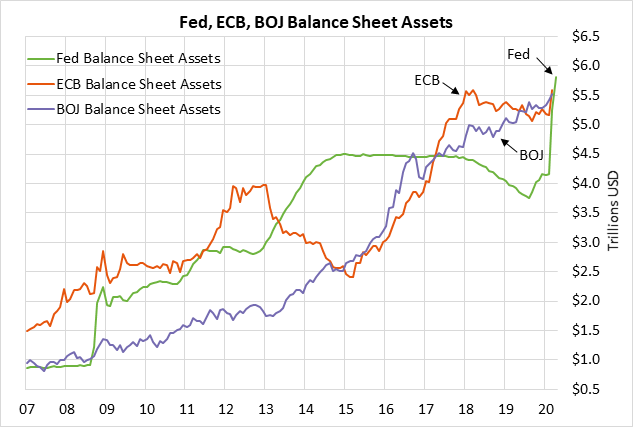
Germany refuses to issue joint debt but ECB keeps Italy bond yields down — EU finance ministers meet today and will focus on how to provide fiscal stimulus to the EU countries. Austrian Finance Minister Bluemel on Monday said that “we have enough measures to help each other if needed.” Austria thus joined Germany and the Netherlands in their resistance to issuing joint euro bonds to pay for coronavirus rescue measures. German Finance Minister Scholz on Monday said that the European Stability Mechanism rescue fund “already now offers the possibility for Eurozone countries to raise capital jointly with the same advantageous terms for all.”
Figures released yesterday showed that the ECB has already bought 30.2 billion euros of securities under its new Pandemic Emergency Purchase Program, with purchases skewed towards Italy with purchases of 11.9 billion euros. The ECB has so far been successful in suppressing a surge in Italian bond yields in response to fears of a financial crisis in Italy. The spread of the 10-year Italian bond yield over the 10-year German bund yield is currently at 192 bp, which is up from pre-pandemic levels in February of about 130, but still down sharply by -87 bp from March’s upward spike to a 10-month high of 279 bp.
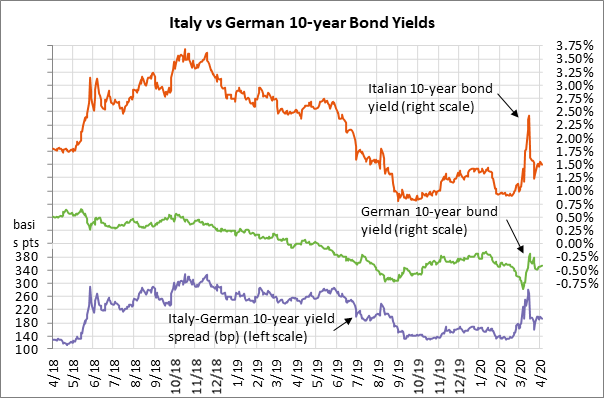
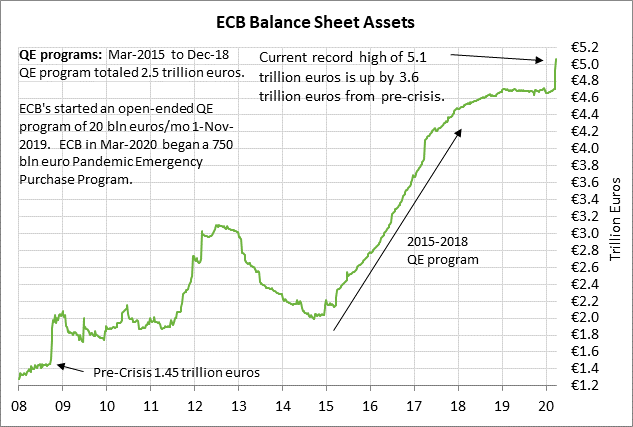
Oil prices fall as OPEC+ meeting is delayed and as U.S. cooperation is sought — May WTI crude oil prices on Monday fell sharply by -$2.26 (-7.97%) to $26.08 per barrel as the OPEC+ conference call was delayed until Thursday from Monday. Saudi Arabia, Russia, and other OPEC+ members are negotiating behind the scenes to see if they can produce a credible production cut agreement to present to the markets.
Russia and Saudi Arabia are trying to get the U.S. to participate in the OPEC+ meeting, or at least cooperate in a G-20 energy ministers meeting on Friday. However, U.S. cooperation could have some negative political ramifications for the White House since many American consumers would not be happy if the U.S. government starts cooperating with the OPEC cartel that has been fleecing them out of their hard-earned dollars for decades.
However, the U.S. government could simply acknowledge that U.S. oil production will be falling sharply in the coming weeks due to market conditions, counting that decline as a contribution to an OPEC+ production cut agreement. Indeed, the number of operating U.S. oil rigs has plunged in just the last three reporting weeks by a total of -121 rigs (-18%) to a 3-year low of 562 rigs last Friday. U.S. oil producers are quickly closing oil rigs that have become unprofitable with the plunge in oil prices into the $20’s, well below shale breakevens that average around $50 per barrel, according to the Dallas Fed.
There is no doubt that U.S. oil production is headed sharply lower from the recent record high of 13.1 million bpd due to market conditions. The U.S. could use that decline as a face-saving measure for Russia and Saudi Arabia, which will have to do most of the heavy lifting in any production cut agreement.
